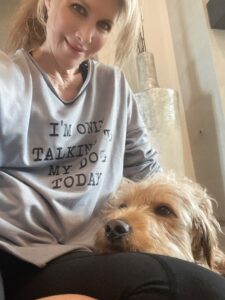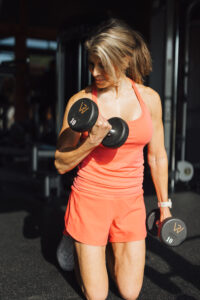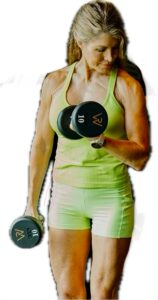We’ve all been there: stepping on the scale, holding our breath, and then… disappointment. Or maybe even worse, a number that sends us spiraling into a day of self-criticism. But what if I told you that number on the scale is actually irrelevant? Seriously. It’s time to rethink our relationship with the scale and focus on what really matters: your overall health and well-being.
The truth is, total body weight is a poor indicator of progress, especially when it comes to fitness and body composition. Think about it: muscle weighs more than fat. So, if you’re working hard to build muscle while simultaneously losing fat, the scale might not budge – or worse, it might even go up! This can be incredibly discouraging, even though you’re making positive changes.
Why the Scale Lies (and What to Focus On Instead)
The scale only tells you your total weight. It doesn’t differentiate between muscle, fat, water weight, or even the undigested food in your system. You could be losing body fat and gaining muscle – a fantastic transformation – and the scale might not reflect that at all. In fact, it might even trick you into thinking you’re not making progress, leading you to abandon your healthy habits altogether. Plus, if you’re like me, your total weight can vary 5 pounds in a day!
So, what should you focus on instead? Here are some much more meaningful ways to track your progress:
-
Daily Positive Actions: Focus on the process, not just the outcome. Did you get your workout in? Did you hit your step count? Did you choose a healthy meal? Did you prioritize sleep? Did you hydrate well? These daily wins are the building blocks of lasting change. Track these positive actions, and celebrate your consistency.
-
Protein Intake: Protein is crucial for building and maintaining muscle. Are you prioritizing protein at each meal, aiming for 30-50 grams? Eating protein first can also help regulate appetite and support your fitness goals.
-
Sugar and Processed Food Elimination: These are the culprits behind inflammation, energy crashes, and often, excess body fat. Focus on gradually reducing your intake and replacing them with whole, unprocessed foods.
-
Quality Rest: Sleep is essential for muscle recovery, hormone regulation, and overall health. Are you getting enough restful sleep? Prioritize it!
-
Measurements: A simple measuring tape can tell you a much more accurate story than the scale. Track the circumference of your waist and hips. A decrease in these measurements is a great indicator of fat loss, even if the scale isn’t moving. This digital measuring tape from Amazon has an app that goes with it to assist with tracking changes over time.
-
Bioimpedance Scale (With a Grain of Salt): While not 100% accurate, a bioimpedance scale can give you a general idea of your body fat percentage and muscle mass. It’s important to remember that these readings can fluctuate, so don’t get too hung up on the numbers. Focus on the trend over time. Is your body fat percentage decreasing while your muscle mass is increasing? That’s a great sign!
The Longevity Factor
Losing body fat and gaining muscle isn’t just about aesthetics; it’s about longevity and quality of life. Excess body fat, particularly around the midsection, is linked to numerous health problems. Building muscle, on the other hand, supports metabolism, bone health, and overall strength. Investing in your body composition is an investment in your future.
It’s Time for a Break-Up
So, is it time to break up with your scale? I think so. Focus on the positive actions you’re taking each day, prioritize protein, ditch the processed foods, get good rest, and track your progress with measurements and a more holistic approach. Remember, health and well-being are about so much more than a number on a scale. Embrace the journey, celebrate your wins, and focus on creating a healthier, stronger you – inside and out.
Remember: more muscle is GOOD!!! It’s metabolically active tissue and it weighs more than fat.
You got this!








